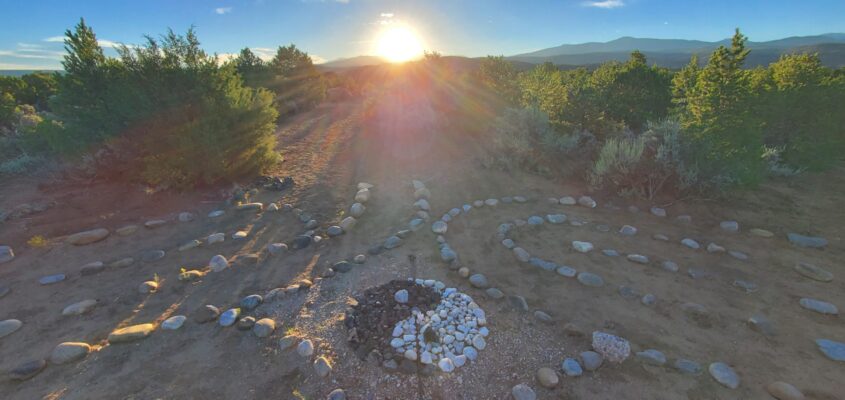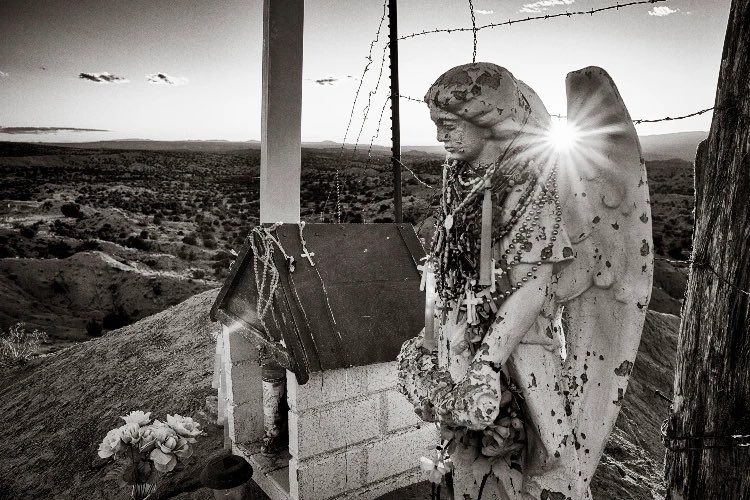About
OUR LAND
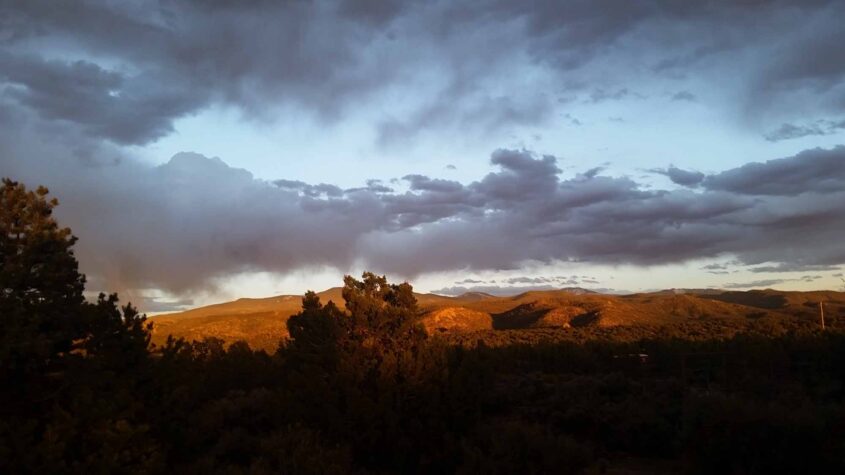
Victor and Steven are in a place called L'Azotea (Lah-so-TAY-uh) (Spanish for "the terrace"). The name is descriptive of the land's location in a flat clearing above the Chimayó valley in northern New Mexico. Throughout our years here, we have felt an increasing connection to all the beings that inhabit this place - human, animal, plant and mineral. We have also been able to sense the presence of the indigenous peoples who came before us, including the pain and loss they suffered at the hands of the 'conquering' people who arrived to this 'new world' centuries ago. It is our intention to honor the lives and the stories of the Tewa and other Pueblo people in all we do, and to respect the land as they did.
Radiating outward from the pueblo are ... shrines that are linked to the earth navel by a continuous flow of prayers and blessings and that transmit and receive the messages of the spiritual world. Four of them, marked by stones, are located close to the four ceremonial entrances to the pueblo. Four more are represented by the Tsin, the four sacred hills. Pueblos tell their children that these hills are dangerous places, riddled with tunnels, where boogiemen called the Tsave Yoh will take them if they misbehave. The Tsave Yoh, who are also healers of the sick and enforcers of pueblo law, live on the Tsin along with other important spirits. The hill of Tsi Mayoh, from which the Spanish village of Chimayo takes its name, is considered a Tsin by several pueblos, and so is Tun Yoh, or Black Mesa, which rises abruptly beside the Rio Grande between the pueblos of Santa Clara and San Ildefonso.
- From "Enchantment and Exploitation" by William deBuys
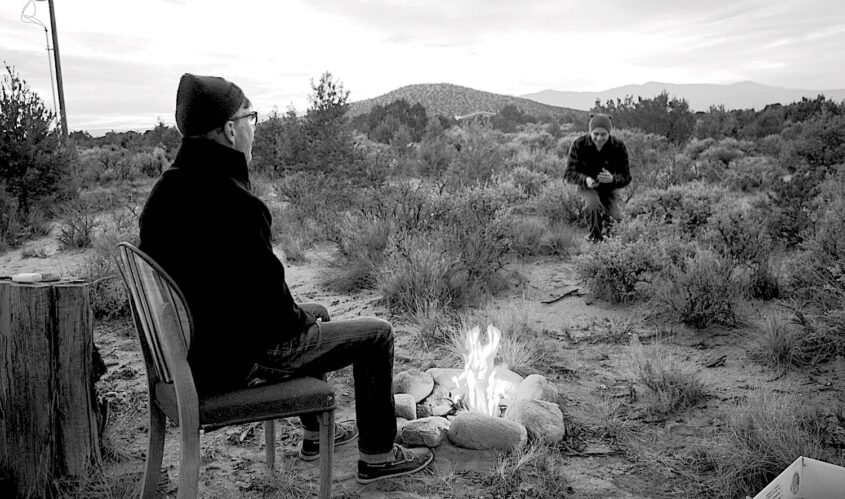
Our land is located in the shadow of the hill of Tsi Mayoh, and this serves as a constant reminder of the sacredness and reverence with which the Pueblo people lived.
•
VICTOR ARCHULETA
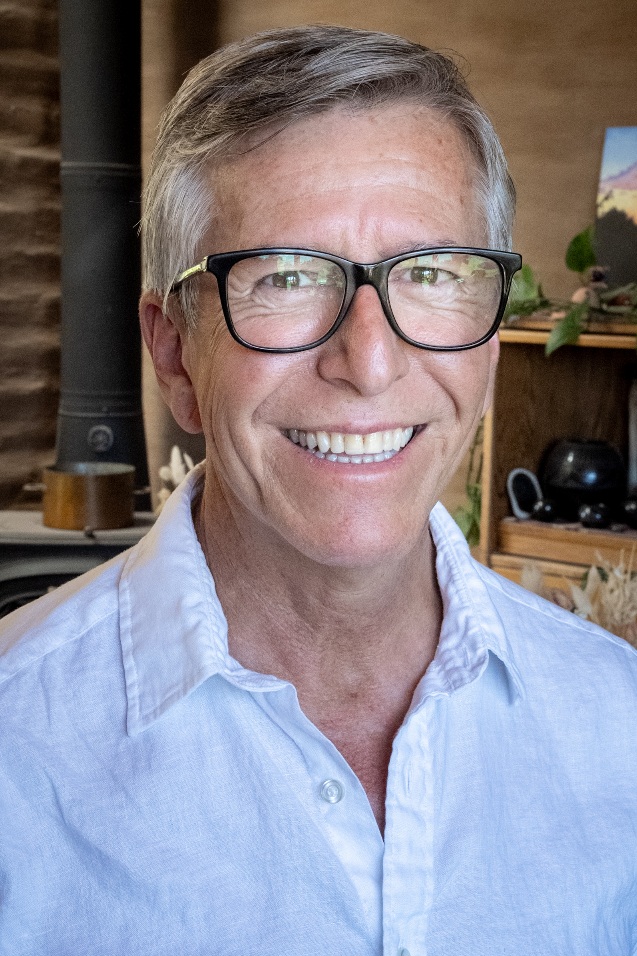
MY PHILOSOPHY
Having a passion for interacting and connecting with people, I have come to see the power of intention and the power of our thoughts as we plan and take action to fulfill on our life goals.
Although we have made tremendous strides in allopathic (Western) medicine in the past 250 years, there is a treasure trove of knowledge and wisdom available from ancient traditional medicine and alternative medical modalities for maintaining health and facilitating our body’s own natural ability to heal itself.
As a wellness practitioner I work with you to listen to your wellness challenges and intentions for your own well-being and together create a space customized for your individual session. If I’ve done my “job”, the session will unfold naturally and may initiate a systemic and dynamic shift that may release various types of restrictions and facilitate a free flow of the body’s systems.
MY STORY
At a certain point, after we have achieved a certain level of “personal mastery” in our lives, we have the luxury of turning our attention outward. What can I contribute? How can I help others? We want to leave a legacy, to somehow provide something to others that makes a difference and when it’s all said and done, be left with a feeling that it mattered that we existed.
After trying to work out how I could do that, I came to realize that we each have something unique to offer others; a gift as it were. And, the only thing we really need to do is to be clear about what that gift is and then share it with as many people as possible.
In addition to growing up in the small village of Chimayo, NM, where my ancestors settled in the 1700s, I was educated in nearby Los Alamos, NM, where I was groomed to be an academic professional and thus had a gift to share. I had crafted a career in Information Technology, creating and managing systems to collect, organize, analyze and report data for a variety of health care companies. After many years, I was getting further away from the people I was servicing and felt that I had completed my IT career. I decided that I wanted to make a radical shift in careers to feel closer to the impact I could have on others.
I’ve always been fascinated by the countless miracles that are occurring within our own bodies. Amazed at the complex and elegant series of systems that coordinate with exquisite perfection to maintain a vehicle with which we can experience this magnificent journey on this amazing planet. My Bioengineering studies at UCSD provided a solid foundation for the mechanics of how the body works. So when I began exploring new career possibilities, I realized that not only was I fascinated and intrigued by the miraculous inner-workings of the human body, I have always had a natural affinity for physical contact. Instinctively, I would reach out and hold a hand or touch an arm to be physically connected to my friends and family. Over time I have gained a good understanding of the importance of physical touch. Not just for infants and children, but for adults as well.
About 17 years ago I began exploring various wellness modalities and have completed training and certification as a yoga teacher, certified reflexologist, 3rd Level Reiki practitioner, training as a Craniosacral therapist, aromatherapist and sound therapist. In this time I have had the great honor of working with dozens of clients to continue the evolving process of deepening my technique and intuition as a wellness practitioner.
•
STEVEN SPRUNG

MY CAREER
After graduating as a film major (and psychology minor) from Syracuse University, I moved from my hometown on Long Island, NY to Los Angeles, CA to pursue a career in film and television. It wasn't long before I realized what a rich hub of spirituality Southern California was. Regular visits to the now-defunct famous spiritual bookstore, The Bodhi Tree, helped me discover a seemingly endless wellspring of inspirations.
I began feeling called to visit every kind of spiritual center and temple I could find, from the Shambhala Center, to the Vedanta Temple and eventually the Self-Realization Fellowship of Paramahansa Yogananda. A friend had gifted me a copy of Autobiography of a Yogi, which led to me studying and practicing Yogananda's meditation techniques. At a local health food store, I stumbled upon The Sun Magazine, a beautiful independent publication, and immediately started what has become a decades-long subscription. Friends turned me on to Alan Watts and Ram Dass, whose book The Only Dance There Is expanded my mind and heart beyond what I had previously known. It was via Alice A. Bailey and her 24 books of esoteric philosophy, that I learned about the New Group of World Servers and other spiritual principles and values, which I still find meaningful. As a meditation teacher, I now share what I've learned with those who would like to develop a regular practice.
Through the years, as I explored this wide variety of spiritual paths and disciplines, it slowly began to dawn on me: What drew me to Southern California was more than just a career in "Hollywood".
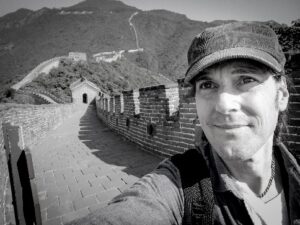
Along the way, I was introduced to my Tai Chi teacher, James Wing Woo, who gave martial arts lessons in the gym he built behind his home in Hollywood. This began my long and fruitful period of studying, practicing and now teaching others his powerful method of Tai Chi.
My interest in the art and craft of astrology began with the esoteric teachings I had been studying and has evolved into a more experiential approach. My aim in practicing astrology in this way -- both in individual consultations, retreats and in workshops and other gatherings -- is to provide people with a real experience of how the planetary energies play out in their day-to-day lives.
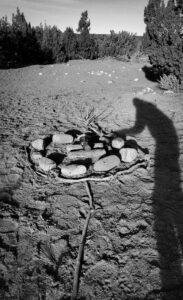
Most recently, as a result of spending time at our home on sacred land at the foot of the Sangre de Cristo mountains, north of Santa Fe, New Mexico, I have become more connected with the earth and all her beings. I've been exploring deep ecology, including the writings of Dolores LaChapelle (Sacred Land, Sacred Sex, Rapture of the Deep), grief work as taught by Stephen Jenkison in his books Die Wise and Come of Age, animisim, through the writings of Sophie Strand, and her beautiful book, The Flowering Wand, and the work of indigenous author Tyson Yunkaporta, written about in his book, Sand Talk.
In my online magazine, Sprungvision, I publish even more 'hidden gems' of art, music, science, health, spirituality and more by which I have been influenced.
MY OFFERINGS
My offerings of tai chi, meditation, and astrology are my three primary methods for helping people evoke a more peaceful feeling within themselves. Moving among these offerings brings me great joy, with each one nourishing and expanding the other.
•
CHIMAYO, NM

Chimayo, New Mexico is a small village north of Santa Fe, along what's known as the 'high road to Taos'. Here is a sweet blog post about someone's day trip through Chimayo.
•
Chimayó by Jarrett Garcia
For well over half a century Chimayó has been one of the most popular tourist destinations in northern New Mexico. Located a short 25 miles north of Santa Fe and 40 miles south of Taos, it is the site of New Mexico’s most famous Spanish colonial church. Dating back to 1816 the Santuario de Chimayó de Nuestro Señor de Esquipulas is often referred to the “Lourdes of America,” for the renowned pilgrimage site. By far the most well known cultural, religious and tourist event takes place during Holy Week when thousands of pilgrims journey to El Santuario de Chimayó. Customarily commencing their religious and/or spiritual trek in the darkness before Good Friday, pilgrims line the highways north of Santa Fe. By Easter Sunday literally tens of thousands of worshipers and visitors pass through the doors of El Santuario, built almost 200 years ago on a site that is sacred to many Pueblo Indians and descendants of Spanish settlers. Believed to be built on sacred earth with miraculous healing powers, the legendary shrine El Santuario de Chimayó is arguably the most visited church in New Mexico and the number of tourist that visit the town is estimated to be over 300,000 annually.
The hallmark religious sites for tourism are the Santuario de Chimayó, and the adjacent Capilla de Santo Niño de Atocha. The Potrero Plaza is home to a handful of independently owned businesses that create an ambiance of small town commerce that can be strengthened by the unification of a merchant population that embodies a clear goal to form a cohesive ACD. There are numerous other popular and frequented destination sites, activities and businesses in and around the vicinity of Chimayó.
The historic Vigil Store (El Potrero Trading Post). The store was established 1921 and remains in the founding family. You can purchase religious objects, tin ware, local wood carvings or a soft drink. It is a good place to find locally made religious gifts.
Chimayó is also famous for the weaving traditions of the Ortega and Trujillo families, who have been weaving in the early Spanish tradition since the 1700's. Their work differs from that of the Navajo weavers although the artists admit that there has been sharing of styles and materials. Their work is termed the "Rio Grande" style. Chimayo weaving is part of this tradition. Family owned businesses and workshops are part of the acclaimed ‘New Mexico Fiber Arts Trail’.
The annual Chimayó Festival of Arts Studio Tour and High Road Arts Tour are held in September. The Studio Tours provide the opportunity to visit a variety of local artists in their home setting.
The town is famous for its heirloom chile (Capsaisin Annuum “Chimayó”). There was currently in the Chimayó Chile Project that worked with local farmers and artists in order to preserve the native strain of chile and to keep this cultural asset alive in the community.
One of New Mexico's oldest restaurants is located in Chimayó—Rancho de Chimayó. It is famously known for traditional New Mexican cuisine. The signature drink is the Chimayó cocktail, a tequila and apple cider based drink with fresh lemon juice and crème de cassis over ice. The village has several other traditional cafes and is home to a locally famous tortilla company.
Plaza del Cerro, in the Northern New Mexico village of Chimayó, is the last remaining defensive Spanish Colonial plaza in New Mexico.
The Chimayó Museum Plaza del Cerró is dedicated to educating the public, particularly young New Mexicans, about the history and culture of Chimayó and its surrounding communities, and to supporting the work of established and emerging local artists.
The acequias, particularly in the Plaza del Cerró where one of the oldest intact crop irrigation canals is located. The acequia was probably built by Tano Indians prior to the coming of the Spanish and it still flows behind one side of the Plaza.
•
Chimayo videos:
Acequias videos:
Chimayo is between Santa Fe and Taos on what is known as the "High Road to Taos". For more on Taos and the region:
•
Photos by Don Usner
Read this Rolling Stone article about the more painful side Chimayo's past, by local author Don Usner. See more photography and writing at Don's website, including his galleries "Chimayo" and "Chimayo Monochrome".
•
CONTACT
For more information or to ask questions, please contact us.
